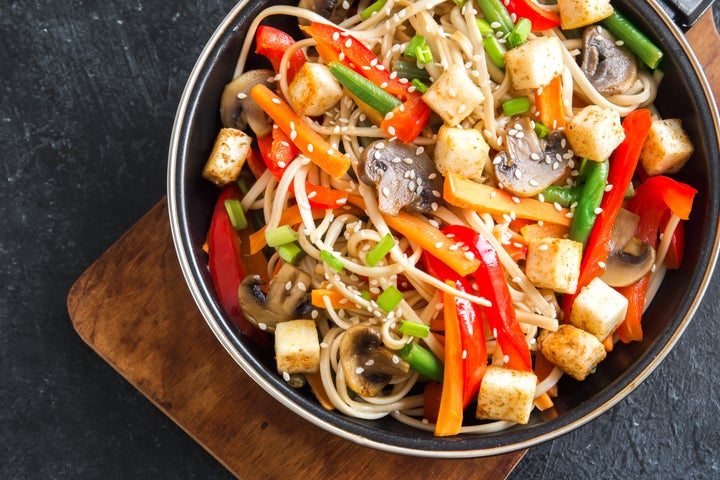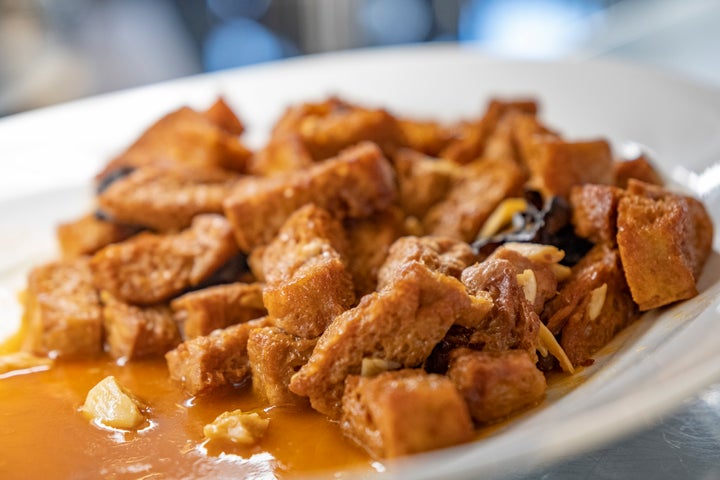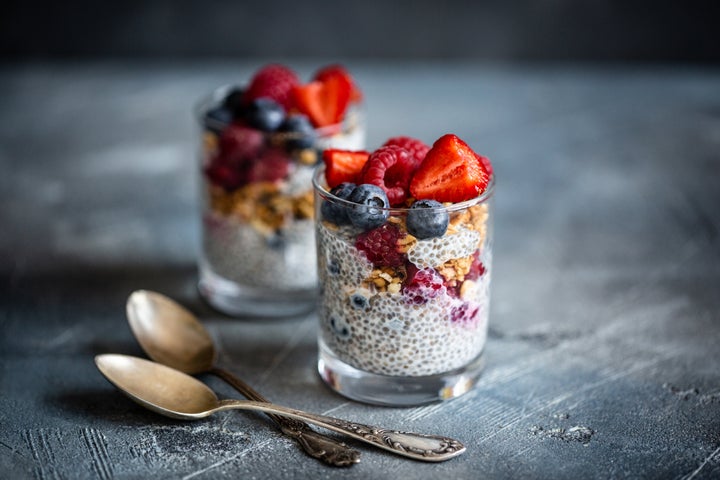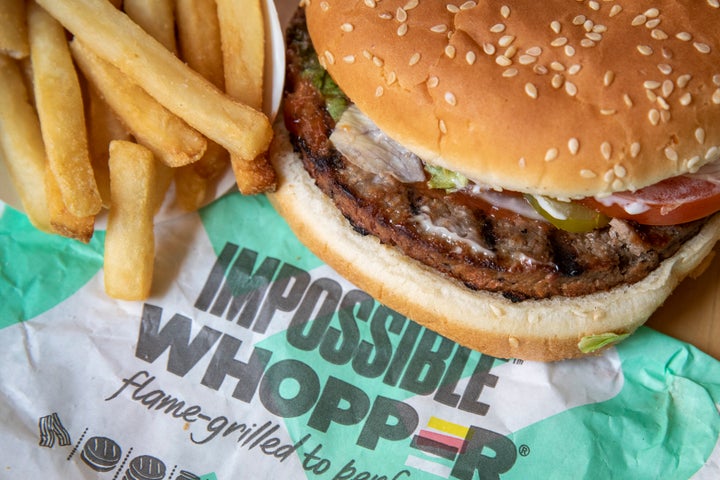The meat industry is in a bit of a crisis right now due to the spread of COVID-19 in meat processing facilities. Some meat plants have closed and others have reduced production as more and more workers at these facilities have become sick, and meat cases in some supermarkets are now sitting empty.
It’s tough to know how widespread or long-lasting these meat shortages will be. But in the meantime, we do know that many vegetable-based proteins are still readily available and can be a great substitute for daily protein needs if you can’t get your hands on meat (or simply don’t want to).
Here’s what nutritionists have to say about eight different types of plant-based protein.
Tofu
Tofu is a versatile soy-based food containing around 10 grams of protein for each half-cup serving.

“Tofu is an important source of protein for many vegetarians and vegans, and provides a significant amount of calcium, magnesium, phosphorus and iron,” said Stella Volpe, a registered dietitian who chairs the Department of Nutrition Sciences at Drexel University in Philadelphia. “Some research has shown that it might lower low-density lipoprotein (LDL) cholesterol concentrations,” often referred to as the bad cholesterol.
Chickpeas
Beans are a great source of plant-based protein that are easy to incorporate into your meals, and chickpeas are a popular choice. You’ll get around 7 grams of protein for each half-cup serving of chickpeas. Additionally, chickpeas are “high in fiber, a good source of carbohydrates, rich in folate, phosphorus and iron, and contain healthy fats,” explained Natalie Allen, registered dietitian at Missouri State University.
If chickpeas aren’t your thing, swap them for black beans or another bean you love.
Lentils
Lentils are another nutritional powerhouse hailing from the legume family, containing 9 grams of protein for each half-cup serving. They’re rich in fiber and other nutrients like potassium, folic acid, magnesium, iron and fiber. Since lentils are so high in fiber you’ll need to be sure to stay hydrated to avoid constipation, bloating or other digestive issues.
Katherine Basbaum, a clinical dietitian at UVA Health in Virginia, has another tip for avoiding digestive distress: “By soaking or sprouting your lentils ahead of cooking, you can lower the chance of digestive issues.”
Seitan
Seitan is a popular meat alternative because it takes on other flavors pretty well and does a decent job of mimicking the texture of meat. Each serving contains about 16 grams of protein, but most seitan products in stores are highly processed and loaded with sodium. Nutritionists say it’s important to keep this high sodium content in mind when eating seitan. For a lower-sodium option, buy plain seitan and season it yourself, or make seitan from scratch, though we’ll warn you that the process is labor-intensive.

If you have celiac disease or other problems digesting gluten, seitan is not the meat alternative for you, according to Danielle Fineberg, a registered dietitian who specializes in plant-based nutrition. This is because seitan is made from gluten, the proteins found in wheat.
Quinoa
Quinoa is a protein-rich whole grain ― yes, grains can have protein, too ― that’s easy to mix into a variety of meals, from salads to veggie burgers. A serving of cooked quinoa is loaded with 8 grams of protein. It’s also high in fiber and good for heart health and blood sugar control. “As far as plant proteins go, quinoa is rare, since it is widely considered to be a ‘complete’ protein due to the impressive amino acid composition of quinoa,” Basbaum said.
Being a complete protein means quinoa contains all nine essential amino acids that our bodies can’t make on their own. But this doesn’t mean you need to be hyper-focused on complete proteins with every meal ― it’s possible to get an adequate amount of essential amino acids simply by eating a varied diet.
When you eat quinoa, one side effect to look out for is an irritated stomach that can arise from quinoa’s coating, Volpe said, but “if you rinse them well before cooking, it should reduce or eliminate any irritation to the stomach.”
Almonds
“An ounce of almonds has about 6 grams of protein, which is the same amount as a boiled egg,” said registered dietitian Samantha Cassetty. Almonds will also help you meet your nutritional needs for fiber, magnesium, calcium and vitamin E.
“Adding almonds to a salad or grain bowl with quinoa, chickpeas and veggies ― yes they have some protein too ― can be an easy way to help a person following a plant-based diet meet their protein needs,” explained Fineberg.
Chia seeds
Chia seeds may be tiny, but they pack a surprising amount of protein into a small space ― a two-tablespoon serving delivers about 5 grams of protein. They’re also high in fiber and are a complete protein.

Chia seeds don’t have a strong flavor, so you can easily slip them into smoothies, yogurt and overnight oats where you want to let other flavors shine.
Imitation meat products
Imitation meat products are a good source of protein for people who like the taste or texture of meat ― if that’s not you, there are plenty of other ways you can get protein without eating these products. Imitation meats vary in protein content, but both the Beyond Burger and the Impossible Burger contain around 20 grams of protein per serving, which is roughly the same amount as a beef patty.
These are convenient and may be nice to bite into when you’re craving meat, but heavily processed foods like this aren’t for everyday eating, Cassetty said.

“It’s fine to eat anything ― including highly processed foods ― sometimes, but these shouldn’t be eaten as your main source of protein,” Cassetty added. “If you’ve moved away from meat and want to have an occasional burger and you find these really satisfying, have one and enjoy it. But most of the time, swap your meat and faux meat products for pulses.”
Of course health concerns aren’t the only reason people are reaching for meat alternatives. If you can’t get your hands on meat due to meat shortages, or you’re staying away from it for environmental or ethical reasons, an imitation burger can be a good substitute, especially in moderation. “The environmental impact of meat, especially beef, is devastating and if these plant-based imitation beef products can help people reduce their beef consumption, that’s a huge win for the planet,” Fineberg said.
